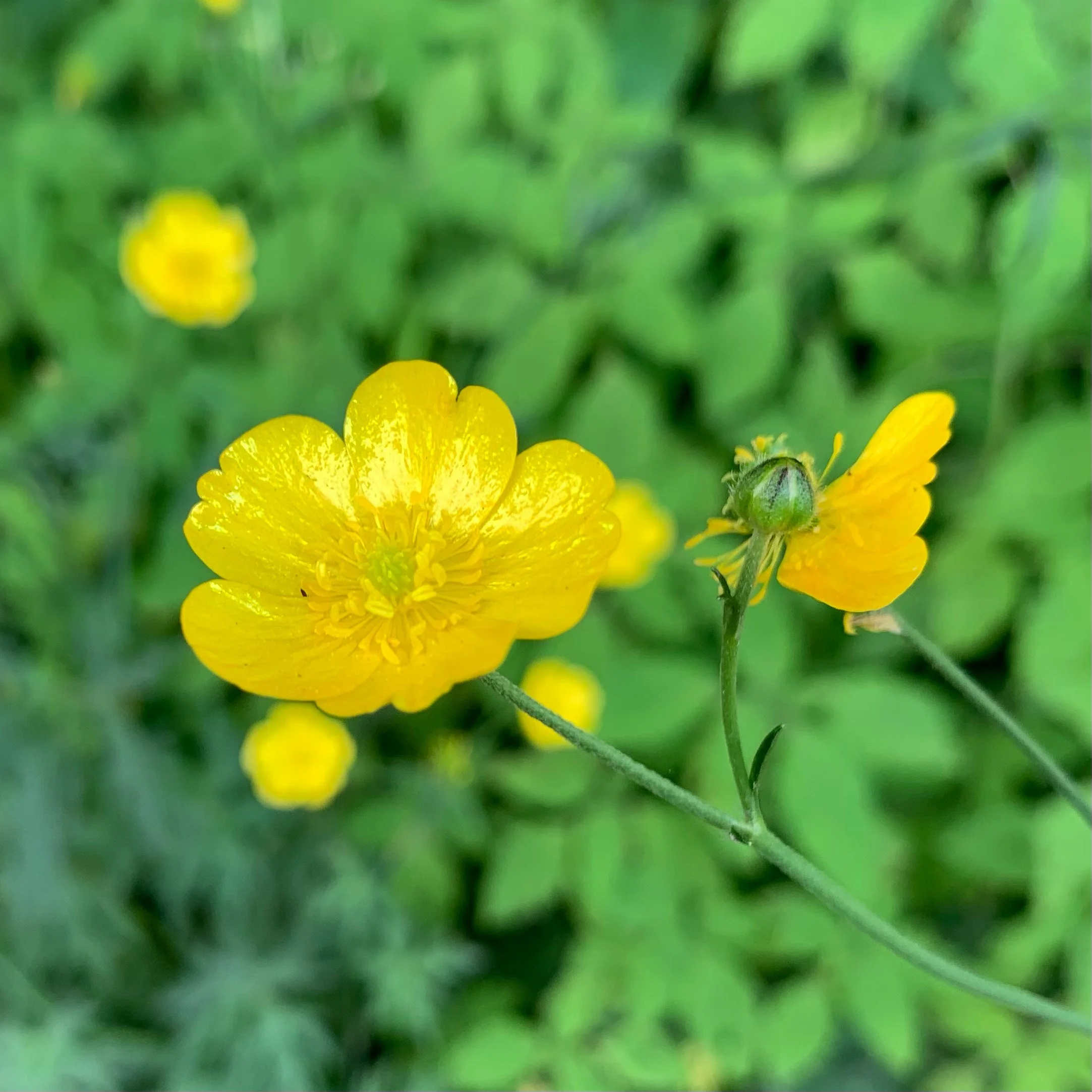Buttercup Gloss
The flowers of the buttercups (Ranunculus spp.) are bright yellow and glossy. Their intense yellow and mirror-like sheen are the result of both pigment and structure.
There are two main ways to make color in nature: pigments and structure. Pigments are molecules that create color by absorbing one wavelength of light and reflecting another. For example, chlorophyll is a pigment in leaves that absorbs red light and reflects green light. When you look at a leaf, all that reflected green light enters your eye, and the leaf looks green.
Structural color is produced by incredibly small, physical structures that interact with light in such a way, through interference, diffraction or scattering, that only certain wavelength of light are reflected back. For example, the radiant blues and greens of a peacock feather are the result of tiny barbs on the feathers that scatter the light and reflect back blue and green.
Buttercup flowers appear yellow due to the top layer of cells, which are packed full of carotenoids, pigments that reflect yellow light. This layer of cells is incredibly smooth and thin. Light that passes through the top layer of cells without being absorbed by the carotenoids hits several air pockets. This creates and effect known as “thin film interference.” Light reflected by the top cells and the air pockets underneath gives the flowers their gloss. Below the region of air pockets is a layer of starch. Any light that makes it to this layer is dispersed and reflected back through the top layer of cells, where it is absorbed by the carotenoids, intensifying the flower’s yellow color by activating its yellow pigments twice.
Why are these flowers so glossy and yellow? The most obvious guess would be to attract pollinators. On sunny days, insects approaching the plants from above may see flashes of light from the glossy petals. Another possibility is that the smooth, reflective surface of the flower channels light toward the center of the structure, raising the temperature and promoting pollen and seed maturation.
Brian Rutter, PhD, is the cofounder of Hundredfold Video and plant biologist working for 2Blades at the University of Minnesota. Subscribe to our newsletter to receive our “Sower Stories – Odd Facts About Plants” and video production tips in your inbox every month!
Works Cited:
Sun, Jiyu, Bharat Bhushan, and Jin Tong. "Structural coloration in nature." Rsc Advances 3, no. 35 (2013): 14862-14889.
van der Kooi, Casper J., J. Theo M. Elzenga, Jan Dijksterhuis, and Doekele G. Stavenga. "Functional optics of glossy buttercup flowers." Journal of the Royal Society Interface 14, no. 127 (2017): 20160933.

